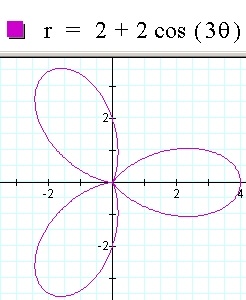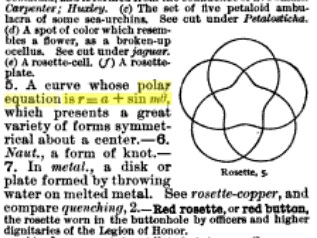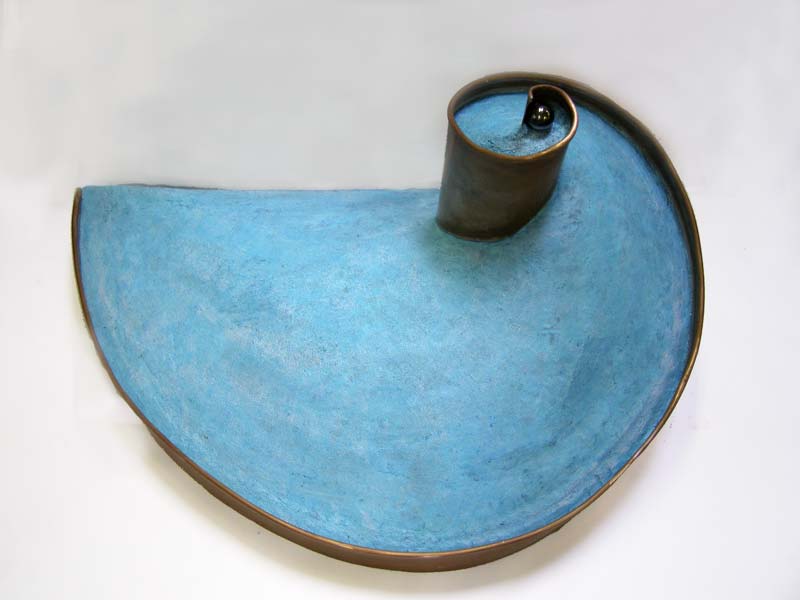Polar Equations
December 9th, 2010
In this investigation we look at a polar equation: first there will be a quick introduction followed by some variations of the variables in the equation just to get a feel for what kind of effect they will have on the equation.

Please note: you might need a plugin to play the animations in this page.
2. Our equation
3. Some variations on a,b and k
4. Windmill
1. Quick Introduction
Here is an introduction to polar coordinates and equations:
2. Our Equation
This is the polar equation we will be working with:


3. Variations on a, b and k
Note what happens when a = b:
Now see what happens if a < b:

And if b < a:

Finally, let's look at different values of k (notice what happens when k is an integer):

4. Windmill
Let's keep k constant at 3 so that we three leaves:


Now we do the same with b:

We can also add a value to theta which would have caused a left or right shift in Cartesian coordinates, now has this effect:

Now, by using what we know about the effects of the variables a,b and k, we can create a pretty nice animation (we will keep a = b and increase theta rapidly with some n):

I hope you enjoyed a quick introduction to polar equations.

Definition 5 of rose

Pottery of a polar nature